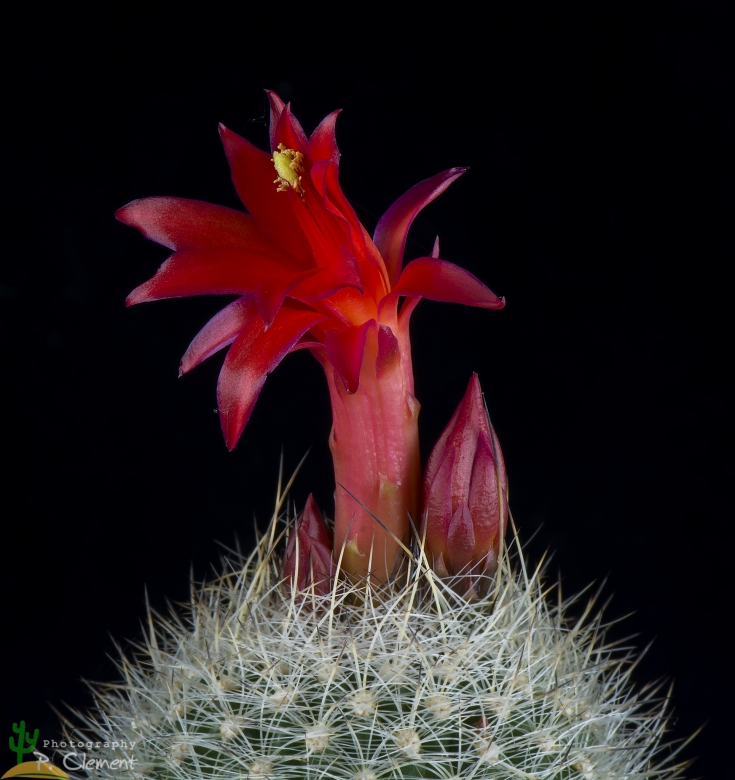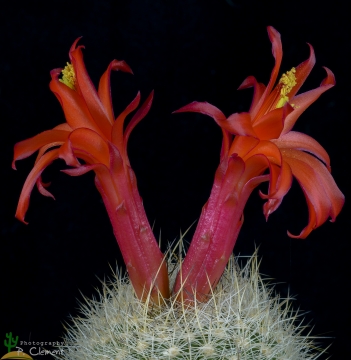Donate now to support the LLIFLE projects.
Your support is critical to our success.
Your support is critical to our success.
Accepted Scientific Name: Matucana haynei (Otto) Britton & Rose
Cactaceae (Britton & Rose) 3: 102, fig. 109. 1922 Britton & Rose

Matucana villarica Photo by: Peiffer Clement
( Matucana haynei forma) KK580 (Collector Karel Kníže) Huanncayo, Villarica, Peru.
( Matucana haynei forma) KK580 (Collector Karel Kníže) Huanncayo, Villarica, Peru.
Synonyms:
- Matucana villarica n.n.
See all synonyms of Matucana haynei
back
Accepted name in llifle Database:Matucana haynei (Otto) Britton & Rose
Cactaceae (Britton & Rose) 3: 102, fig. 109. 1922
Synonymy: 29
- Matucana haynei (Otto) Britton & Rose
- Arequipa haynii (Otto) Krainz in Krainz
- Borzicactus haynei (Otto) Kimnach
- Cereus haynii (Otto) Croucher
- Echinocactus haynii Otto
- Matucana blancii Backeb.
- Borzicactus haynei var. blancii (Backeb.) Donald
- Matucana breviflora Rauh & Backeb. in Backeb.
- Borzicactus haynei var. breviflora (Rauh & Backeb.) Donald
- Matucana multicolor var. breviflora (Rauh & Backeb.) F.Ritter
- Matucana calocephala Skarupke
- Borzicactus calocephalus (Skarupke) Donald
- Matucana cereoides Rauh & Backeb. in Backeb.
- Matucana crinifera F.Ritter
- Matucana crinifera f. cristata hort.
- Matucana elongata Rauh & Backeb. in Backeb.
- Matucana haynei var. elongata (Rauh & Backeb.) F.Ritter
- Matucana haynei var. erectipetala Rauh & Backeb.
- Arequipa haynii var. erectipetala (Rauh & Backeb.) Krainz in Krainz
- Matucana megalantha F.Ritter
- Borzicactus aurantiacus var. megalanthus (F.Ritter) Donald
- Matucana multicolor Rauh & Backeb. in Backeb.
- Matucana supertexta F.Ritter
- Matucana variabilis Rauh & Backeb. in Backeb.
- Borzicactus variabilis (Rauh & Backeb.) Donald
- Matucana variabilis var. fuscata Rauh & Backeb.
- Matucana villarica n.n.
- Matucana winteri F.Ritter
- Matucana yanganucensis Rauh & Backeb. in Backeb.
Matucana haynei subs. herzogiana (Backeb.) Mottram
Cactaceae Consensus Init. 3: 11. 1997
Synonymy: 5
- Matucana haynei subs. herzogiana (Backeb.) Mottram
- Matucana herzogiana Backeb.
- Matucana herzogiana var. perplexa Backeb.
- Borzicactus haynei var. perplexa (Backeb.) Donald
- Matucana haynei var. perplexa hort.
Matucana haynei subs. hystrix (Rauh & Backeb.) Mottram
Cactaceae Consensus Init. 3: 11. 1997
Synonymy: 7
- Matucana haynei subs. hystrix (Rauh & Backeb.) Mottram
- Borzicactus haynei var. hystrix (Rauh & Backeb.) Donald
- Matucana hystrix Rauh & Backeb.
- Matucana multicolor var. hystrix (Rauh & Backeb.) F.Ritter
- Matucana haynei subs. hystrix var. atrispina Rauh & Backeb.
- Borzicactus haynei var. atrispina (Rauh & Backeb.) Donald
- Matucana hystrix var. atrispina Rauh & Backeb.
Matucana haynei subs. myriacantha (Vaupel) Mottram
Cactaceae Consensus Init. 3: 11. 1997
Synonymy: 15
- Matucana haynei subs. myriacantha (Vaupel) Mottram
- Arequipa myriacantha Britton & Rose
- Borzicactus myriacanthus (Vaupel) Donald
- Borzicactus weberbaueri var. myriacanthus (Vaupel) Donald
- Echinocactus myriacanthus Vaupel
- Matucana myriacantha (Vaupel) Buxb.
- Submatucana myriacantha (Vaupel) Backeb.
- Matucana comacephala F.Ritter
- Matucana huarinensis hort.
- Matucana huarinensis var. brevispina hort.
- Matucana huarinensis var. brunispina hort.
- Matucana myriacantha f. purpureoalba (F.Ritter) Lodé
- Matucana purpureoalba F.Ritter
- Matucana myriacantha f. roseoalba (hort., F.Ritter) Lodé
- Matucana roseoalba hort., F.Ritter
back

Matucana villarica Photo by: Peiffer Clement
Send a photo of this plant.
The gallery now contains thousands of pictures, however it is possible to do even more. We are, of course, seeking photos of species not yet shown in the gallery but not only that, we are also looking for better pictures than those already present. Read More...
The gallery now contains thousands of pictures, however it is possible to do even more. We are, of course, seeking photos of species not yet shown in the gallery but not only that, we are also looking for better pictures than those already present. Read More...
| Your Actions | |
|---|---|
| Back to Matucana index | |
| Back to Cactaceae index | |
 |
Back to Cacti Encyclopedia index |









